This document is in continuation of my first document Basics of SAP Standard Cost estimate- Understanding the flow of cost settings-Part 1. This is basic and structural way of documenting the steps involved in defining Costing Variant.
This document explains the costing Variant configuration and components assigned to costing variant like Valuation variant, Qty structure Control, Transfer Control and Assignments. originally i thought of writing only 2 parts to complete it but it seems it will need few more parts to complete.This document is intended to explain the cost flows to a standard cost estimate. Explaining various settings in background as previous part.
Then double click on PPC1 and configure other parameters.
This document explains the costing Variant configuration and components assigned to costing variant like Valuation variant, Qty structure Control, Transfer Control and Assignments. originally i thought of writing only 2 parts to complete it but it seems it will need few more parts to complete.This document is intended to explain the cost flows to a standard cost estimate. Explaining various settings in background as previous part.
- Costing Variant
Now let's understand each of these parameters and its assignment.
- Control
1-Costing type- The costing type enables you to specify the purpose of a cost estimate.
Click on create Costing type n existing or create a new one, or define it using T-code OKKI
In Save parameter tab selec Start with Period ( Most commonly used),
In Price Update tab select Standard price. The reason we select standard price because we want to calculate standard cost.
2-Valuation variant- T CODE OKK4
This is most important part of configuration, We will understand the importance of Different tabs.
For Material valuation,Internal Activity,Sub-Contracting, Overhead and Misc.
If you want to use different valuation strategies or different overhead rates in plants that belong to the same company code, you can define plant-specific valuation variants by assigning a valuation variant to a plant. Choose the push button Valuation variant/plant. If you don't do this, the valuation variants apply to all your plants.
Here I have created a Valuation variant in a plant then most important part comes is Material valuation
Here we define how do we wanted our Material to be valuated Strategy Sequence. The one above used is most commonly used however it can be modified according to Business requirement.
For material valuation, you can choose up to five (5) strategies for each valuation variant.
-Planned price-According Planned price in Costing 2 tab of Material master (MM03 view)
During cost run or standard costing if this has maintained the system will consider this value first.
-In case the system did not find price in priority 1 , It goes to priority 2 Valuation Price accordingly to Price control in Material master, Costing 2 tab (MM03 view)
-L Price from Purchasing Info Record-This one used in case of outside buy or sub contract materials. And for this we also maintain a sub sequence that too in Sequence wise.
Explore more options in TCODE OKK4 and understand each options and its usage.
Internal Activity Here you define the sequence in which the system searches for prices in activity type planning or actual activity price calculation in Cost Center Accounting or Activity-Based Costing to valuate the utilized activity types and business processes. You also specify which plan/actual version is used.
For activity types/processes, you can choose up to three (3) activity prices for each valuation variant.
In the above example I have selected 1 planned price for the period option as per planning data in Cost center planning/ activity planning (TCODE-KP26/KP06 We will see more in next document Part 3)
Subcontracting Here you define the sequence in which the system searches for prices in the purchasing info record. In purchasing, the quota arrangements are used to create a mixed price for materials that are manufactured with external vendors with parts provided by the customer. You can specify whether the quota of the individual vendors that are entered in the list for the material to be processed should be determined through the planned quota arrangement or the actual quota arrangement.
For subcontracting, you can choose up to three (3) strategies for each valuation variant
I have selected 3 Net Quotation price from Info record where as there is 8 other options out there which you can select according to your business need. Quotation in Purchasing i have selected Actual Quota Arrangement you have an option of Planning Quota Arrangement as well to select as per business need.
External Processing-Here you define the sequence in which the system searches for prices in the purchasing info record or routing operation for valuation of the external activities
I have selected Net purchase order price here however for external processing, you can choose up to three (3) strategies for each valuation variant. Based on Business requirement you can select priorities amongst 9 Strategies available in standard SAP.
Overhead Costs
You can link the valuation variant for definition of overhead to a costing sheet. You can also enter a costing sheet for the allocation of overhead to raw materials, if you want to use specific overhead conditions for raw materials.
If you want to differentiate overhead application according to material groups, you must have defined overhead groups (T CODE OKZ2) and made the necessary settings for the costing sheet in the step Define costing sheet (T CODE KZA1- I will explain that in My Next Document). Here in the example I liked a Costing sheet for our analysis purpose.
You can also specify whether overhead is calculated for subcontracted materials in material costing.
Miscellaneous-Price Factors
If you want to use the valuation variant for inventory costing, you can link it with price factors.
Specify whether the factors of the relevancy to costing indicator should be valid for all valuation variants or only for particular valuation variants.
If you enter three plus signs (+++) as the valuation variant, the factors are valid for all valuation variants that do not have specific entries. I have selected this option for our analysis purpose
If you specify a particular valuation variant, the system uses the associated relevancy to costing indicator and the associated factors. Enter a relevancy to costing indicator for each line. Enter a factor for the fixed costs and a factor for the variable costs.
3-Date Control
Key that controls the dates for material cost estimates.
For example you can use date control to define the day for selecting the quantity structure when costing with a quantity structure
When you checked manual entry that means during cost estimate you can manually change the date according to your requirement.
4-Qty Structure Control-
You can use the quantity structure control to specify how the system selects a bill of material and a routing for the material to be costed.
You define the quantity structure control in Customizing for Product Cost Planning. The quantity structure control can apply to either a specific plant or to all plants. You enter the quantity structure control in the costing variant. When the cost estimate is created, the system selects the quantity structure control ID through the costing variant.
When you create a cost estimate for a material, you always use a costing variant. This variant is the link between the cost estimate and the quantity structure control.
I have selected BOM application PC01 and selection ID 05 (TCODE OS30 define BOM Application, A PP Functionality)
The BOM application controls the following:
The order of priority of the BOM usages (selection ID), When a BOM is required to embrace various enterprise areas (in other words, it has several BOM usages), you can determine which usage will be selected by the system first by using a selection ID.
The priority of an alternative BOM for a specific multiple BOM, You can control which alternative BOM the system selects as of a certain date for a specific material, taking into account the plant and the BOM usage. You can use the application to determine whether the system takes this specification into account or ignores it.
Whether the system includes only those BOMs with a status containing particular status indicators
An alternative BOM is only exploded if the BOM status contains the indicator required in the application.
You can check the BOM application and the parameters that are linked to it in Customizing for Product Cost Planning.
I have selected Routing 01 ( TCODE OPEB can be used to define automatic selection, A PP functionality)
The routing selection ID determines how the system selects a routing. You can define several priorities. You assign selection criteria (task list type, task list usage, and task list status) to each of these priorities.
The routing that corresponds to the selection criteria with the highest selection priority is selected. If, however, no alternative routing can be found, the system continues searching using the selection criteria of the next selection priority.
When determining the BOM and routing, the system also checks, Whether the BOM and the routing are valid on the quantity structure date (refer date Control screenshot 10). Whether the lot size in the BOM and in the routing are the same as the costing lot size.
4-Transfer Control-
In this step you define parameters for partial costing. You use partial costing to prevent the system from creating a new cost estimate for a material when costing data already exist. Instead, the existing costing data is simply transferred into the new cost estimate. This improves performance.
Single-Plant Transfer -If cost estimates for certain materials already exist in the individual levels of the BOM, they are not recosted. Rather, the existing costing data is transferred into the cost estimate in accordance with the transfer control.
If you always want to recost, choose the transfer control No transfer.
Cross-Plant Transfer-The special procurement types are used for material cost estimates:
Transfer from other plant, Withdrawal in other plant, Production in other plant
Strategy Sequences for Single-Plant and Cross-Plant Transfer-You can define up to three strategies for single-plant transfer and three strategies for cross-plant transfer. The strategy sequence determines the order in which the system searches for costing data. If the system cannot select a cost estimate even after reaching the end of the strategy sequence, it explodes the BOM of the material and creates a new cost estimate.
Qty Struct.-
Pass on Lot Size- Controls whether the system determines the costing lot size using the lot size of the highest material in the BOM and the input quantities of the components.
1) Do not pass on lot size
If this indicator is not selected, the materials further down in the structure are costed in accordance with the lot size in the costing view of the material master record. When the materials in the next-highest costing level are costed, the costing results of the semifinished materials are converted to the lot size of the finished material to calculate the material costs for the finished product.
2) Pass on lot size only with individual requirement
In the MRP view of the material master record, you can specify that a material is planned as an individual requirement. If such a material is added to another material, costing uses the lot size of the highest material.
3) Always pass on lot size
Here, the costs for all the materials in a multi-level BOM are calculated using the costing lot size of the highest material. This function is used principally in sales order costing.
Ignore Product Cost Estimate without Quantity Structure-
Determines whether a cost estimate with quantity structure can access data that was produced by a cost estimate without quantity structure
You set this indicator if you do not want to work with a cost estimate without quantity structure.
If this indicator is set, the system will ignore data produced by a cost estimate without quantity structure when selecting the BOM as well as when costing. Instead, the system will attempt to calculate the costs of manufacturing the material using an existing BOM or an existing operation.
In the costing view of the material master record, you can use the With quantity structure indicator to specify that the material should be costed either with or without a quantity structure. If the Ignore cost estimate w/o qty structure indicator in the costing variant is set, the system will ignore the entry in the material master record.
- Addictive Cost
You use additive costing to add costs manually to a material cost estimate when they cannot be calculated by the system. Examples of such costs are freight charges, insurance costs, stock transfer costs, incomplete or changed BOMs, and routings.
As a rule, costing calculates the costs of a material on the basis of the quantity structure. This type of cost estimate is performed automatically by the system. However, you can also manually enter estimated values for costs that cannot be calculated by the system. This allows you to add costs to a cost estimate that was calculated automatically.
When you cost materials, the system determines the BOM for the material, and selects a price for the valuation of the material components through the valuation variant. If you set the Incl. additive costs indicator in the valuation variant, the system looks for any existing additive cost estimates for the material. The system adds the costs entered manually to the costs calculated by the system. The costs in the automatic cost estimate and the additive cost estimate are added together for each cost component.
- Update
Update Allowed- Indicator that determines whether a cost estimate can be saved.
Dependencies
Since the cost estimate must be saved if the costing results are to be used further, you must set this indicator.
Examples of further use of the costing results
1. Update in the price fields of the material master:
As the standard price: the results of the standard cost estimate
As the tax or commercial law price: the results of the inventory cost estimate
As special planned prices 1,2,3: the results of all cost estimates
1. Use of the costing results in Cost Object Controlling for:
Variance calculation
WIP calculation
Results analysis
- Assignments-We will know more about Cost Component Structure in my next part, I have already explained in my first part about costing version.
Cost component Structure Specifies which costs are contained in the cost component split. You can use the cost component structure to specify that certain costs
Remain visible in the cost estimate are passed on to Profitability Analysis.
- MISC-Parameters for Error Management
Controls how messages (information messages, warning messages, and error messages) are collected within an application.
Online Messages-The messages are issued individually from the status bar. The log function is inactive in the cost estimate.
Messages logged and saved, mail inactive ,The messages are collected in a log, which can be saved. The messages cannot be sent.
Messages logged and saved, mail active, The messages are collected in a log, which can be saved. The messages can be sent to the person responsible for correcting the error.Messages logged, saving not possible, mail inactive, The messages are collected in a log, which can be processed online, but not saved.
Note
To be able to use a costing variant for the costing run, you must save the log.
This is a long Document i tried to capture each and every aspects of Costing variant. We will see some more configuration and explanation about it in my Next Part. I will try to close this document series in my next part if its too lengthy then i will try to put together a separate document.
Intention of creating this document is to reach out to the newbies and beginners and those who wanted to know and understand the flow of Standard Costing. i will update the document as n when some more points needs to be included or any suggestion from Experts.
Refer to next Document Basics of Standard Costing - Understanding the Cost Component Structure-Part 3
Refer to previous Document Basics of SAP Standard Cost estimate- Understanding the flow of cost settings-Part 1
Source: scn.sap.com


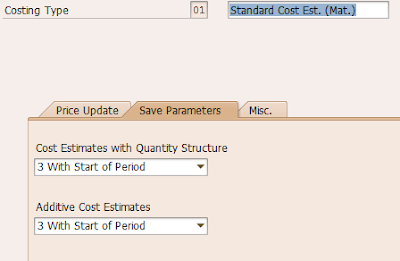


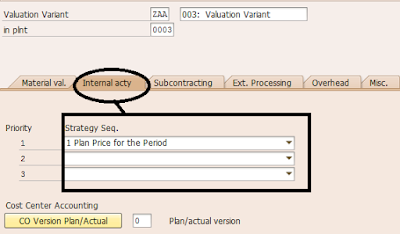
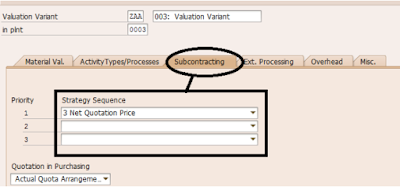

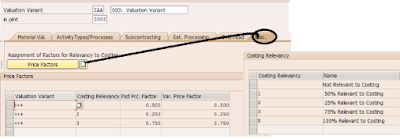


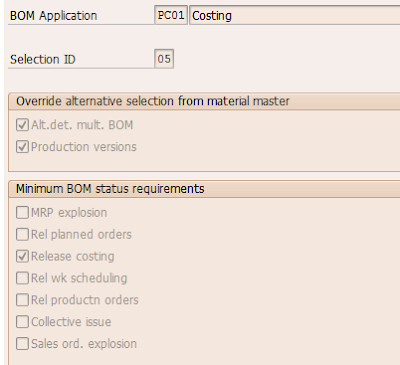




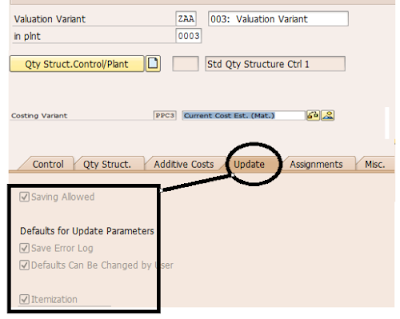


This blog is very useful. Thanks for sharing the information SAP FICO Training
ReplyDeletethanks for the information sap simple finance training in chennai
ReplyDelete